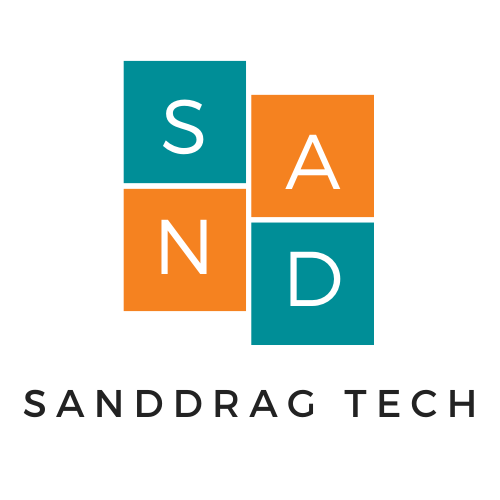

Request Free Demo: Click on Whatsapp number Below to Start Whatsapp Chat with Sales Team
Whatsapp#: +966547315697
Email: sales@bilytica.com
If you want to stay ahead of your competitors, you need the right information to make fast, smart and complete business decisions. Tableau and MicroStrategy are two Business Intelligence (BI) solutions that facilitate the entire process.
Product Overview
Tableau: Since 2003, Tableau allows users to see and understand their business data. The solution offers drag-and-drop functionality and a range of powerful BI tools that allow users to “drill through” their data and discover basic information.
Tableau contains three main products:
Desktop – The desktop connects and analyzes various data and allows users to create visualizations and reports.
Server – The server allows users to collaborate on data and share highly customizable control panels.
Online – Tableau Online is a cloud version of Tableau Server, with no prepaid fees and easy access to your mobile phone.
A disadvantage of Tableau is that users have cited a strong learning curve for executives.
In general, Tableau provides intuitive BI tools that enhance the discovery and understanding of data.
MicroStrategy: Founded in 1989, MicroStrategy offers direct access to large and complex data sets through integrated frameworks such as Hadoop. It uses the drag-and-drop interface and makes it easy to transfer data from any source.
Like Tableau, MicroStrategy can be deployed in the enterprise or in the cloud. It offers a set of integrated tools that facilitate integration, analysis and visualization. Microstrategy Consultant in Saudi Arabia also has a complete mobile app with access to data visualization and dashboards, offline capabilities, scheduled downloads of large datasets, and the ability to act from within the app.
The biggest disadvantage of MicroStrategy is its price, $ 600 per user to access desktop, server or online applications. Some clients stated that users would often require specialized training. It uses strong data structures, which can make data mining and manipulation difficult without predictive or mandatory analysis tools.

Here we will give you an overview of each of them and let you know how to stack them together.
How they stack up?
Access to data
Tableau: The Tableau desktop application contains a clean and simple interface. The drag-and-drop graph and Report Builder allow users to easily customize their dashboards and reports. Tableau Server extends Tableau functionality within an organization, allowing users to collaborate.
Companies can also use the Tableau cloud system, which combines the simplicity of desktop and server platforms. Tableau also contains a mobile application, although it contains fewer features than a MicroStrategy application.
MicroStrategy: MicroStrategy also offers its products across a wide variety of platforms, MicroStrategy has a central metadata repository in which any application can extract data. MicroStrategy Mobile delivers a mobile interactive experience with real-time data updates
Training and support
Tableau: offers a wide range of learning programs and support materials, including free training videos, online courses, online training, white papers, online seminars, product demonstrations, training guides and more. Full support and a forum.
MicroStrategy: MicroStrategy offers fast start courses, classroom training, instructor-led online courses, special training sessions and a learning portal. It does not have an online support forum.
CONCLUSION: Both Tableau and MicroStrategy are available online learning, support guides, and optional exercises in the classroom to quickly guide people.
Forecasting
Tableau: Tableau Consultant in Saudi Arabia provides integrated prediction and predictive analysis. The solution uses smart algorithms to find and predict models. It can include seasonal and historical trends, various data models and predictions.
MicroStrategy: does not have built-in prediction features. Users need to build prediction and prediction models in their application, which can be very difficult and time consuming.
Reference: If you want easy-to-use predictions that can be updated in multiple forms and use cases, Tableau contains this built-in feature. MicroStrategy has no predictive or predictive potential.
Takeaways:
Tableau and MicroStrategy are excellent data analysis solutions. Tableau is designed around a user-friendly drag-and-drop interface and custom dashboards, and examines all the key metrics of a business.
MicroStrategy is designed as a powerful solution for BI Enterprise. Because of its high concentration on Hadoop datasets and a more expensive pricing structure, it may be more suitable for larger companies, although each solution is scalable.
If you need more information about BI software in general, our latest BI guide can help you. It includes expert advice and provides a detailed overview of all considerations regarding the purchase of BI software.
Services We Offer:
Strategy
- Competitive Intelligence
- Marketing Analytics
- Sales Analytics
- Data Monetization
- Predictive Analytics
Planning
- Assessments
- Roadmaps
- Data Governance
- Strategy & Architecture
- Organization Planning
- Proof of Value
Analytics
- Data Visualization
- Big Data Analytics
- Machine Learning
- BI Reporting Dashboards
- Advanced Analytics & Data Science
- CRM / Salesforce Analytics
Data
- Big Data Architecture
- Lean Analytics
- Enterprise Data Warehousing
- Master Data Management
- System Optimization
Outsourcing
- Software Development
- Managed Services
- On-Shore / Off Shore
- Cloud Analytics
- Recruiting & Staffing
